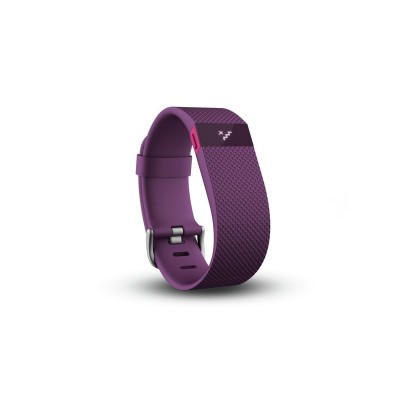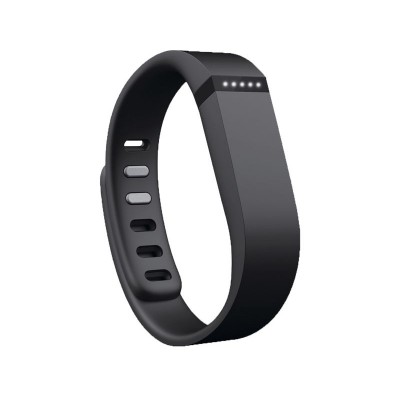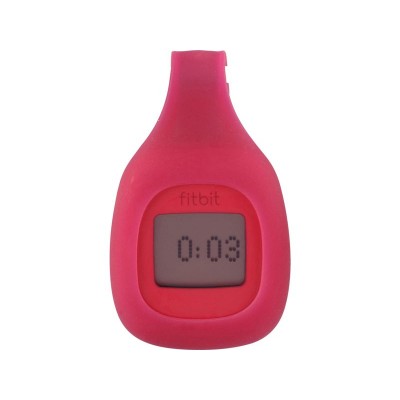Fitbit Charge HR Small Heart Rate Monitor Wristband - Plum
392/8385

Product details
- Brand: Fitbit
- Catalogue number: 392/8385
- Manufacturer's number: TBC
Fitbit support
 UK:
UK:
 Eire:
Eire:
Email me this page
Enter your email address to have this page emailed to you *
FAQs
To restart or reboot your tracker by turning it off and on without deleting any data, follow the instructions in How do I restart my tracker? Restarting is an effective troubleshoot for many scenarios.
The steps below provide a more complicated troubleshoot known as a "factory reset." Only follow these steps if a Fitbit Customer Support agent asks you to do so or you're following the firmware update troubleshooting steps for a Charge HR. You might be asked to do a factory reset if:
- You have a Fitbit Charge HR and you've tried all the steps in Why can't I update my tracker?
- Your Windows 10 device and the Fitbit app for Windows 10 can't detect your Charge or Charge HR with Bluetooth.
- You're using an Android mobile device and having difficulty with notifications or syncing.
- You're using the Fitbit app for Android on a device running an older operating system (4.3 or earlier) and the tracker was previously bonded to another mobile device.
A factory reset deletes any stored data, which includes all data that hasn't synced to your Fitbit account and your alarms, goals, and notifications. After a factory reset you must set up your tracker again.
To factory reset your tracker:
- Attach the charging cable to your tracker and plug the other end into a USB port.
- Press and hold the button for approximately two seconds and without letting go of the button:
- Remove the charging cable from your tracker.
- Wait about seven to nine more seconds after removing the charging cable.
- Let go of the button and hold it down again.
- After "ALT" and a white screen flash, let go of the button and hold it down again.
- After you feel a vibration, let go of the button and hold it down again.
- After you see "ERROR," let go of the button and hold it down again.
- After you see "ERASE," let go of the button. The tracker will turn off.
- To turn your tracker back on, press the button or attach the charging cable (make sure to plug in the other end of the cable). If the time on your tracker reads 0:00, the reset was successful.
- Next you'll tell your Fitbit account that you're setting up a new tracker.
- If you use a Fitbit app, go to Account and choose Set Up a Device. Follow the instructions to replace your tracker.
- For fitbit.com instructions see How do I set up my tracker?
If your tracker has one of the following problems, it may be fixed by a restart:
- Your tracker isn't syncing
- Your tracker isn't responding to button presses, taps, or swipes
- Your tracker is charged but doesn't turn on
- Your tracker isn't tracking your steps or other stats
For restart instructions, choose your tracker below.
Note: Restarting your tracker turns it off and on without deleting any activity data. If your tracker saves notifications, a restart deletes them.
- Plug your charging cable into the USB port on your computer or any UL-certified USB wall charger.
- Insert the other end into the port on the back of your Fitbit Charge or Fitbit Charge HR. Your tracker will begin charging.
- Press and hold the button for 10 to 12 seconds until you see the Fitbit icon and a version number (e.g. "V30").
- Let go of the button.
- Unplug your tracker from the charging cable.
Your tracker should now work normally. If your tracker still doesn't work after a restart, contact Customer Support.
|
HOW DOES MY TRACKER DETECT MY HEART RATE?
When your heart beats, your capillaries expand and contract based on blood volume changes. PurePulse LED lights on your tracker reflect onto the skin to detect blood volume changes and finely tuned algorithms are applied to measure heart rate automatically and continuously. The heart rate icon you see on the display tells you if you're in one of three heart rate zones.
WHAT ARE HEART RATE ZONES?
Heart rate zones can help you optimize your workout by targeting different training intensities. The default zones are calculated using your estimated maximum heart rate. Fitbit calculates your maximum heart rate with the common formula of 220 minus your age. The illustrations below provide examples for each zone. Note that the appearance of the icons may look slightly different between trackers; for example, dots instead of dashes. For more information about zones, see the American Heart Association's Target Heart Rates article.
PEAK ZONE
Peak zone, which means your heart rate is greater than 85% of maximum, is the high-intensity exercise zone. The peak zone is for short intense sessions that improve performance and speed.
CARDIO ZONE
Cardio zone, which means your heart rate is 70 to 84% of maximum, is the medium-to-high intensity exercise zone. In this zone, you're pushing yourself but not straining. For most people, this is the exercise zone to target.
FAT BURN ZONE
Fat burn zone, which means your heart rate is 50 to 69% of maximum, is the low-to-medium intensity exercise zone and may be a good place to start for those new to exercise. It’s called the fat burn zone because a higher percentage of calories are burned from fat, but the total calorie burn rate is lower.
OUT OF ZONE
When you’re out of zone, which means your heart rate is below 50% of maximum, your heart rate may still be elevated but not enough to be considered exercise.
CUSTOM ZONE
Instead of using the three default zones you can create a custom zone if you're targeting a specific heart rate. On your Fitbit app dashboard, tap Account and find Heart Rate Zones. Then enter your custom zone.
On fitbit.com, log into your dashboard and click the gear icon in the upper right. Choose Settings >Personal Info. There you can enter your custom zone.
WHAT IS RESTING HEART RATE?
Resting heart rate measures your heart beats when you are still, and it can be an important indicator of the health of your heart. According to the American Heart Association website, “the average resting heart rate is 60-80 beats per minute, but it’s usually lower for physically fit people.” This is because, “active people often have lower heart rates because their heart muscle is in better condition and doesn’t need to work as hard.” Also, the average resting heart rate rises with age. For more information, see the American Heart Association's All About Heart Rate article.
HOW IS RESTING HEART RATE MEASURED?
Resting heart rate refers to the heart rate measured when you’re awake, calm, comfortable, and have not recently exerted yourself. We use your heart rate data from when you’re awake and asleep to estimate your resting heart rate. For best accuracy, wear your tracker to sleep.
Your resting heart rate is usually higher than your heart rate while you are asleep, so don’t be surprised if your resting heart rate is higher than the lowest number that you see in your heart rate graphs.
WHAT IS MAX HEART RATE?
Max heart rate is used to calculate different heart rate zones. Fitbit calculates your max heart rate with the common formula of 220 minus your age. Don't be concerned if occasionally during intense exercise your heart rate goes above your Fitbit-calculated max heart rate.
Instead of using the default, you can create a custom max heart rate if you're targeting a specific heart rate. In the Fitbit app dashboard tap or click Account and find an option to change your heart rate zones. From there you can create a custom max heart rate.
WHAT IMPACTS THE ACCURACY OF MY HEART RATE READING?
As with all heart-rate tracking technology, whether a chest strap or a wrist-based sensor, accuracy is affected by personal physiology, location of wear, and type of movement.
For all-day wear when you’re not exercising, your tracker should usually rest a finger’s width below your wrist bone and lay flat, just as you would wear a watch. Fitbit’s PurePulse heart rate tracking system is designed to be most accurate when the tracker is worn on the top of your wrist.
For improved heart rate accuracy keep these tips in mind:
- Experiment with wearing the tracker higher on your wrist during exercise. Because blood flow in your arm increases the farther up you go, moving the tracker up a couple inches can improve the heart rate signal. Also, many exercises such as push-ups cause you to bend your wrist frequently, which is more likely to interfere with the heart rate signal if the tracker is lower on your wrist.
- Do not wear your tracker too tight; a tight band restricts blood flow, potentially affecting the heart rate signal. That being said, the tracker should also be slightly tighter (snug but not constricting) during exercise than during all-day wear.
- With high-intensity interval training, P90X, boxing, or other activities where your wrist is moving vigorously and non-rhythmically, the movement may prevent the sensor from finding an accurate heart rate. Similarly, with exercises such as weight lifting or rowing, your wrist muscles may flex in such a way that the band tightens and loosens during exercise. Try relaxing your wrist and staying still briefly (about 10 seconds), after which you should see an accurate heart rate reading. Note that your tracker will still provide accurate calorie burn readings during these types of exercise by analyzing your heart rate trends over the course of the workout.
Note that if you remove your tracker but it keeps moving, for example if you put it in a pocket or backpack, the tracker may display an erroneous heart rate reading. To prevent this by turning off heart rate tracking when the tracker is not in use, log into your dashboard and go to Settings > Devices to turn your Heart Rate Tracking to "Off."
WHAT IMPACTS MY HEART RATE?
Your heart rate may be affected by any a number of factors at any given moment. Movement, temperature, humidity, stress level, physical body position, caffeine intake, and medication use are just a few things that can affect your heart rate. Different medical conditions and medications can impact your heart rate. Consult your doctor before starting an exercise routine.
WHAT IS MY CARDIO FITNESS SCORE?
Your cardio fitness score, Fitbit's estimate of your VO2 Max, is an indicator of overall fitness that can help predict performance for endurance-based activities including running, biking, and swimming (source). At this time it is only available with the Fitbit Charge 2. For more information, see What is my cardio fitness score?
HOW DO I CHANGE THE HEART RATE SETTING ON MY TRACKER?
Log into your fitbit.com dashboard and click the gear icon in the top right corner. Under Settings > Devices> Heart Rate, you can choose On, Auto, or Off.
The default setting of Auto is appropriate for most people; the heart rate tracker is active when you are wearing it and is inactive when you remove it. If there are times when your heart rate isn’t being tracked even though you are wearing your tracker, you can choose On. If you aren’t interested in heart rate tracking or want to maximize battery life, you can choose Off.
WHAT IS PUREPULSE?
Our PurePulse heart rate tracking is the only heart rate technology to offer automatic, continuous wrist based tracking for all-day health insights and workout intensity. It is uniquely designed to measure heart rate all day, with always-on optical heart rate sensors that still maintain extended battery life. PurePulse allows you to accurately track workout intensity and calorie burn with finely tuned algorithms that provide insight through interactive charts and graphs.
WHAT ACTIVITIES DON'T WORK WITH PUREPULSE?
Activities with extreme arm motions, such as boxing, are harder to track second to second; however, PurePulse can still provide accurate calorie burn readings during these types of exercises by analyzing your heart rate trends over the course of the workout.
ARE THE PUREPULSE LEDS SAFE?
Allergy to visible light is extremely rare and the PurePulse LED lights are on the visible spectrum, similar to the lights in your home or office. The LED lights have very low power so they won't burn your skin, and they're programmed to shut down if your device freezes or can't find a signal. If epilepsy or any other condition makes you sensitive to flashing lights, you can turn the LEDs off.
HOW DO I TURN OFF THE LED LIGHTS?
Find the Heart Rate setting on your tracker and turn it off to stop the blinking lights. You must change the setting to Auto or On to resume heart rate tracking.
WHY DON'T I ALWAYS SEE MY HEART RATE?
Occasionally your tracker may have difficulty getting a strong signal. If you don't see your heart rate on your tracker, first make sure you are wearing it correctly. Experiment with placing the tracker higher on your wrist; because blood flow in your arm increases the farther up you go, moving the tracker up a couple inches can be helpful. Also, make sure you're not wearing your tracker too tightly; a tight band restricts blood flow, potentially affecting the heart rate signal.
After a short wait, you should see your correct heart rate again. If this reading persists, try changing your Heart Rate setting from "Auto," which means the heart rate tracker is usually active when you're moving, to "On," which means the heart rate tracker is always active.
Changing the Heart Rate setting to "On" does increase battery usage, so you'll probably want to change it back to "Auto" later when the signal is strong once again. If you're still unable to get a heart rate signal, please contact Customer Support.
WHY DOES MY DASHBOARD SHOW A DIFFERENT HEART RATE MEASUREMENT THAN MY TRACKER?
When hovering over the heart rate graph on your dashboard, the heart rate measurement shown is a five-minute average. For a minute-by-minute display for a particular workout, click that workout on your dashboard's Recent Exercise tile.
|
With your charged tracker nearby follow these steps:
- Turn your tracker off and back on using the instructions in How do I restart my tracker?
- If you sync your tracker with a Fitbit app, remove the Bluetooth connection on your device. (Skip this step if you use fitbit.com.)
- Find the Bluetooth information. On iOS devices for example this can be found in the Settings app on the Bluetooth screen. You'll see a list of any devices connected using Bluetooth.
- Tap Charge HR and choose Forget or Forget This Device.
- Next, temporarily remove your tracker from your Fitbit account:
- If you use a Fitbit app, tap Account > Charge HR and then Remove This Charge HR.
- If you use fitbit.com, click the gear icon in the top right and then click Settings > Devices> Charge HR > Remove this Charge HR from your account.
- Now add your tracker back to your Fitbit account as if you're setting it up for the first time:
- In the Fitbit app under Account, choose Set Up a Device and follow the instructions. (For fitbit.com instructions see How do I set up my tracker?)
- When you get to the app screen called Final Setup, tap Update Now. A firmware update will start and last up to 10 minutes. If the update doesn't finish move on to the next step.
- Follow the instructions in How do I factory reset my Charge or Charge HR?
Unlike Step 1 when you rebooted your tracker, a factory reset actually deletes your settings and recent data. It also requires setting up the tracker again after the reset. For these reasons its the troubleshoot of last resort but only take a few minutes.
- If the reset process doesn't solve the problem, please contact Customer Support.
Make sure your tracker is charged and then try these steps:
- Turn your tracker off and on again using the instructions in How do I restart my tracker?
- Try the firmware update again. If it doesn't work, reboot your mobile device and try the update again.
- Try the firmware update again. If it doesn't work, on a different mobile device or computer (if available) log into your Fitbit account and try updating your firmware.
Note that if you get notifications from your mobile device on your tracker, before you can use a different device or computer you need to follow the instructions in Why is my tracker only syncing with one mobile device?
- For assistance, please contact Customer Support.
To explore the compatibility of your device, please click here. On this page, you will be able to select your device type & view all of the available features within the Fitbit app.
Questions & answers
How-to videos
-
How To Sync with Windows Devices
-
How To Automatically Record Exercises with SmartTrack
-
How To Set Up A Tracker On A Mobile Device
-
How To Sync and Get Notifications with iOS Devices
-
How To Sync and Get Notifications with Android Devices
-
How To Set Up A Tracker On A Computer
Returns policy
If you need advice or support for your product, please in the first instance contact the support provider using the number on this support page.
If you still need to return your product then please visit our most up to date returns policy here.



